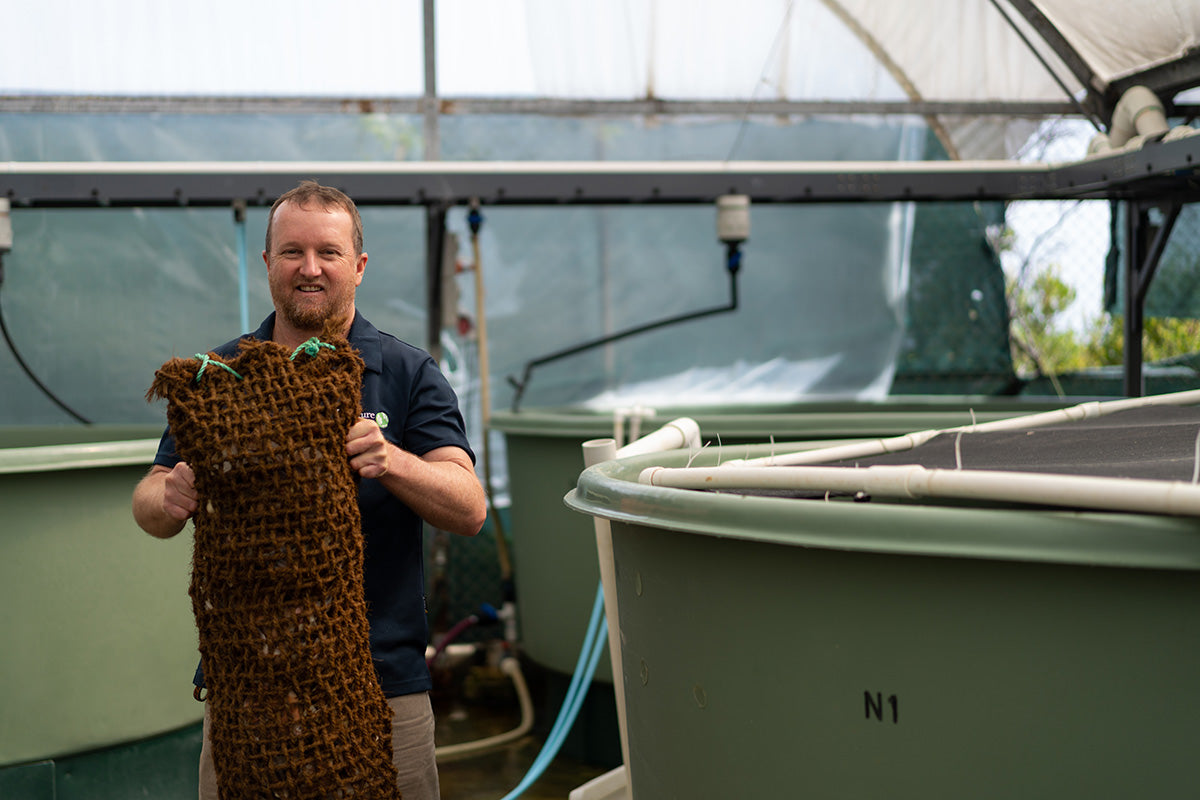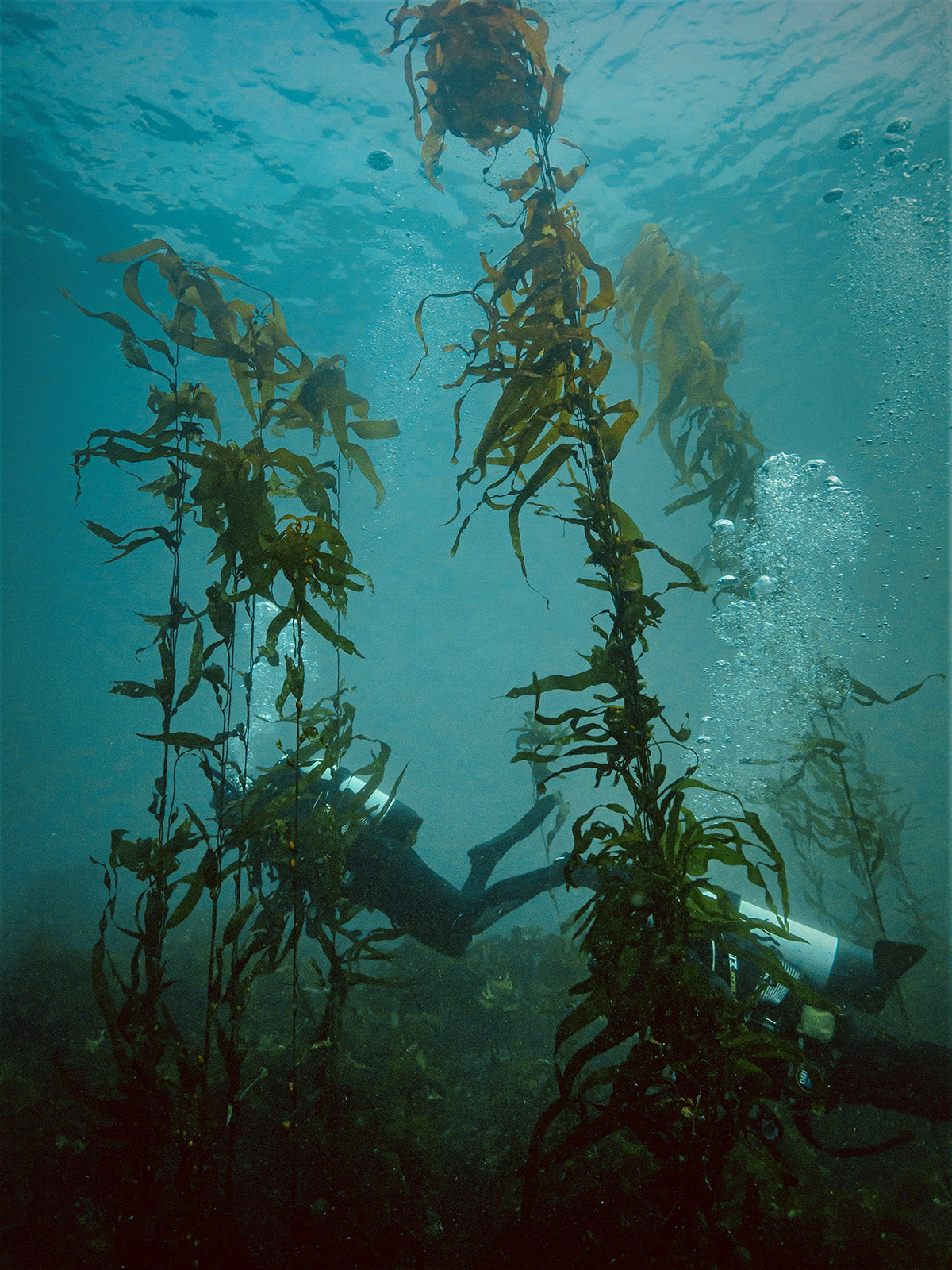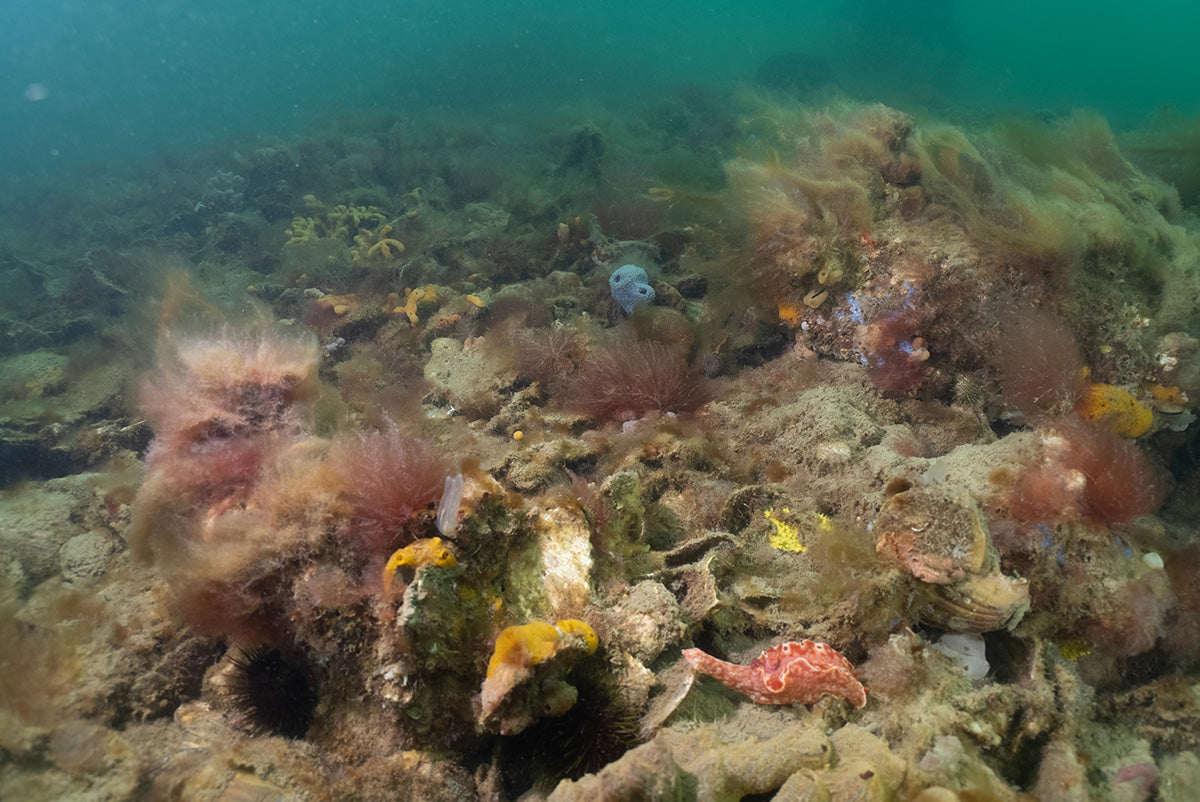“Oh yeah! Check out these ones — they’re looking great!” Simon Branigan fishes a scallop shell out from a giant plastic tank and points to a cluster of tiny specks stuck on the fluted surface. To the untrained eye, they look like fossilised mud blobs. But Kim Weston leans in for a closeup look, gives them the big nod and an even bigger grin. The spat, baby oysters — that are being hatched right next to the slow ebbs and flows of Swan Bay in Victoria, down south on Wadawurrung Country — are doing just fine.
Over the past seven years, Simon, the Marine Restoration Lead for The Nature Conservancy Australia, and Kim, who manages the Victorian Shellfish Hatchery, have successfully produced more than 13 million native flat oysters — Ostrea angasi. But these little oysters aren’t destined for a fancy restaurant. Instead, they’ll be playing a critical role in the recovery of the great shellfish reefs of the south.
“Just picture a coral reef, a three-dimensional habitat growing in the ocean,” explains Simon. “But instead of coral, you've got oysters and mussels — the bivalve species — growing up from the seafloor. They cement together, they grow on top of each other and over time, increase in size. There’s other bivalves like scallops and abalone that also grow in great abundance, but they don’t form reef structures.”
Shellfish reefs do all kinds of lovely things for our oceans, estuaries and coastlines. Bivalves like oysters and mussels are filter feeders. They clean up dirty pollution and all kinds of contamination, including excessive nitrogen from agricultural runoff, which can cause algal blooms. They improve water clarity, which can encourage flowering plants like sea grasses to regrow, and they provide safe homes for a whole bunch of different fish species and invertebrates. They can also help to protect our coastlines from being damaged by erosion.
But the great tracts of shellfish reef that once covered the seabed right along the southern edge of the continent, have been lost or degraded to the point of collapse — they are now one of the most threatened marine ecosystems in Australia. Globally, more than 90 per cent of oyster reefs have been lost.
“For thousands of years traditional owners around the world have sustainably harvested shellfish,” says Simon. “When the European colonists first arrived here, the native oyster reefs in Port Phillip Bay, being subtidal [always covered in ocean water], were so expansive that they were a navigational hazard. They were that big and abundant.”
“But the Europeans decimated the shellfish reefs within a relatively short period of time. The first gold rush in Victoria was actually an oyster rush. People harvested them for food. A bunch of oyster bars opened up in Geelong and Melbourne. Whole oyster shells were also burnt in kilns to extract lime for building. This kind of thing was happening right across the country. A lot of the heritage buildings in Melbourne, Perth and Brisbane were built on the back of these shellfish reefs. They absolutely hammered them. And now we’ve got this intergenerational loss of knowledge — a lot of people don't realise that our bays and estuaries used to be full of oyster reefs.”
In 2015, Simon and his team set about changing that. The Nature Conservancy — which has been working on shellfish reef restoration projects in the United States for over 25 years — initiated a pilot reef building project, working in collaboration with fishers at the Albert Park Yachting and Angling Club, who had seen their local oyster reef slowly decline since the 1980s. It was the first time that anyone had a proper crack at restoring a shellfish reef in Australia.















